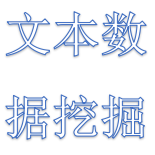In Gapped String Indexing, the goal is to compactly represent a string $S$ of length $n$ such that for any query consisting of two strings $P_1$ and $P_2$, called patterns, and an integer interval $[\alpha, \beta]$, called gap range, we can quickly find occurrences of $P_1$ and $P_2$ in $S$ with distance in $[\alpha, \beta]$. Gapped String Indexing is a central problem in computational biology and text mining and has thus received significant research interest, including parameterized and heuristic approaches. Despite this interest, the best-known time-space trade-offs for Gapped String Indexing are the straightforward $O(n)$ space and $O(n+occ)$ query time or $\Omega(n^2)$ space and $\tilde{O}(|P_1| + |P_2| + occ)$ query time. We break through this barrier obtaining the first interesting trade-offs with polynomially subquadratic space and polynomially sublinear query time. In particular, we show that, for every $0\leq \delta \leq 1$, there is a data structure for Gapped String Indexing with either $\tilde{O}(n^{2-\delta/3})$ or $\tilde{O}(n^{3-2\delta})$ space and $\tilde{O}(|P_1| + |P_2| + n^{\delta}\cdot (occ+1))$ query time, where $occ$ is the number of reported occurrences. As a new tool towards obtaining our main result, we introduce the Shifted Set Intersection problem. We show that this problem is equivalent to the indexing variant of 3SUM (3SUM Indexing). Via a series of reductions, we obtain a solution to the Gapped String Indexing problem. Furthermore, we enhance our data structure for deciding Shifted Set Intersection, so that we can support the reporting variant of the problem. Via the obtained equivalence to 3SUM Indexing, we thus give new improved data structures for the reporting variant of 3SUM Indexing, and we show how this improves upon the state-of-the-art solution for Jumbled Indexing for any alphabet of constant size $\sigma>5$.
翻译:暂无翻译


